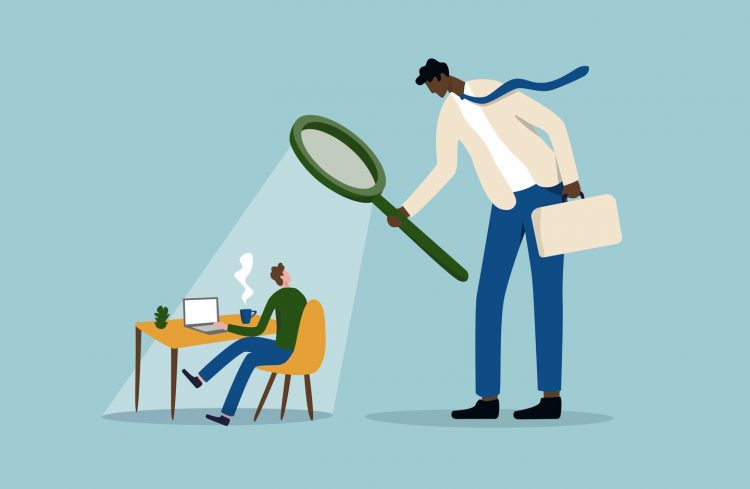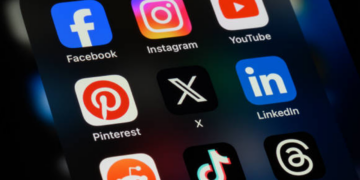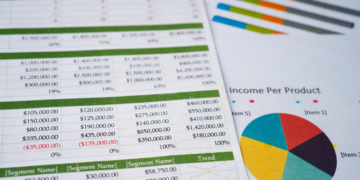Your boss probably has enough data about your digital activities to get a snapshot of your workday — without using any special monitoring software.
Commonly used network-connected apps such as Zoom, Slack and Microsoft Office give managers the ability to find everything from the number of video meetings in which you’ve actively participated, to how much you chatted online with co-workers and the number of documents you saved to the cloud.
But are these snippets of a worker’s digital day an accurate representation of the amount of work employees accomplish?
“Activity does not equal productivity,” says Bart Willemsen, Gartner vice president and analyst focused on privacy and technology. “Productivity should equal outcomes.”
Workers should be aware that many online work apps offer data about their daily activities. But workplace and privacy experts say data from these work apps should be considered only one part of a larger picture of employee productivity. The issue gets messier if managers use data from apps meant to aid employees with stress, time management and well-being to determine an individual’s future at their workplace.
Hundreds of thousands of people adopted new ways of working during the pandemic, spending several days or all of the workweek at home. Gallup estimates that in June — the latest data that’s available — about 34 million people worked in hybrid environments, a mix of office and home. And about 36.5 million people in the United States worked remotely at least five days a week as of early August, according to the Census Bureau’s Household Pulse Survey.
As a result, employers have been seeking new ways to manage and ensure productivity, with a growing number of them turning to surveillance software. At the beginning of 2022, global demand for employee monitoring software increased 65 percent from 2019, according to internet security and digital rights firm Top10VPN.
Employers can use tools in common enterprise software from Microsoft, Google, Zoom and others to measure remote workers’ productivity. (Video: Jonathan Baran/The Washington Post)
But popular work apps also offer data.
On Microsoft 365, an account administrator can pull data — though it may not be easy and would be tracked in compliance logs — on how many emails workers sent, how many files they saved on a shared drive and how many messages they sent as well as video meetings they participated in on the messaging and video tool Microsoft Teams. Google Workspace, Google’s suite of work tools, allows administrators, for security and audit purposes, to see how many emails a user sent and received, how many files they saved and accessed on Google Drive, and when a user started a video meeting, from where they joined meetings, and who was in a meeting. Select administrators on both services can also access the content of emails and calendar items.
On paid Slack accounts, managers can see how many days users have been active and how many messages they’ve sent over a set period of time. Zoom allows account administrators to see how many meetings users participated in, the length of the meetings, and whether users enabled their camera and microphone during them. And if employees have company-issued phones or use office badges or tech that requires them to sign in at the office, managers can track phone usage and office attendance.
To be sure, several software companies say their reports are not for employee evaluation and surveillance. Microsoft has stated that using technology to monitor employees is counterproductive and suggested that some managers may have “productivity paranoia.” In the help section of its website, Slack states that the analytics data it offers should be “used for understanding your whole team’s use of Slack, not evaluating an individual’s performance.”
Brian Elliott, Slack senior vice president and executive leader of the Slack-led consortium focused on the future of work, said using activity-based analytics to gauge productivity doesn’t account for people’s various communication styles. And incentivizing this kind of activity vs. actual outcomes may increase stress and erode worker trust.
“Measuring productivity based on surface-level activity like ‘messages sent’ gives us an extraordinarily limited view into a person’s contributions to their organization,” he said. “Not only is it arbitrary, it’s usually counterproductive.”
Trello, a project management tool owned by software company Atlassian, offers teams the chance to see who’s working on which project and each person’s workload. But that data aims to help teams collaborate more easily, track projects and step in when a colleague may be carrying a heavy load, said Gaurav Kataria, Trello’s head of product. The product does not offer individual reports.
“We didn’t build the product for that use case,” he said. “We are building for the users.”
Several workplace experts agree on one thing: The data doesn’t properly represent a worker’s productivity. Activities such as in-person mentoring, taking time to brainstorm, sketching out a plan or using offline software won’t appear in the data. And measuring quantity might discount the quality of one’s work or interactions.
Getting a snapshot of a worker’s digital day becomes even easier if workers are using the same suite of products for all digital activities. But even without it, employers can use third-party tools to compile data from various digital services, said Daniel Kahn Gillmor, senior staff technologist at the American Civil Liberties Union’s Speech, Privacy and Technology Project.
“There’s nothing preventing anyone from [collecting this data],” Gillmor said, referring to both the tech companies and account administrators. “The more your work is done via these online services, the more information the service providers have.”
Less obvious ways employers might monitor workers without surveillance software is by checking local WiFi network logs and security cameras, Gillmor said. To track workers’ movement through the office, an employer may be able to use local networks’ access point logs to see who was connected to each point at any given time. Employers can also use software to automatically track employee office movement via security camera footage, Gillmor added.
Meanwhile, some apps may help employers understand worker sentiment, actions and behaviors to determine which workers might not be a “cultural fit,” or pose threats of whistleblowing or stealing files, said Wilneida Negrón, director of policy and research for worker advocacy organization Coworker.org. Employers using Microsoft Viva, a tool that helps connect employees to insights, communications and other resources, can add a service called Insights, which sends a snapshot about a worker’s habits and potential for stress to the individual’s work email. That email can be accessed by a restricted set of account administrators. But the data can become problematic if employers secretly use it to discriminate or inform their decisions about employment, compensation or promotions, Negrón said.
Despite the surveillance, workers are not powerless, said Liz Shuler, president of the AFL-CIO.
“There’s power in collective action,” she said. “You can form a union, but you can also create pressure … it takes some form of coming together to rebalance the scale.”
If employers choose to quietly use that data to evaluate their workers, it will probably reduce company loyalty and lead to people working solely to meet metrics rather than effectively doing their jobs, Willemsen of Gartner said.
“My genuine fear is there’s a lot of experimenting going on and no transparency,” he said. “Say out loud and upfront what you’re monitoring and for what purpose. It’s the right thing to do.”
Source by www.washingtonpost.com






























